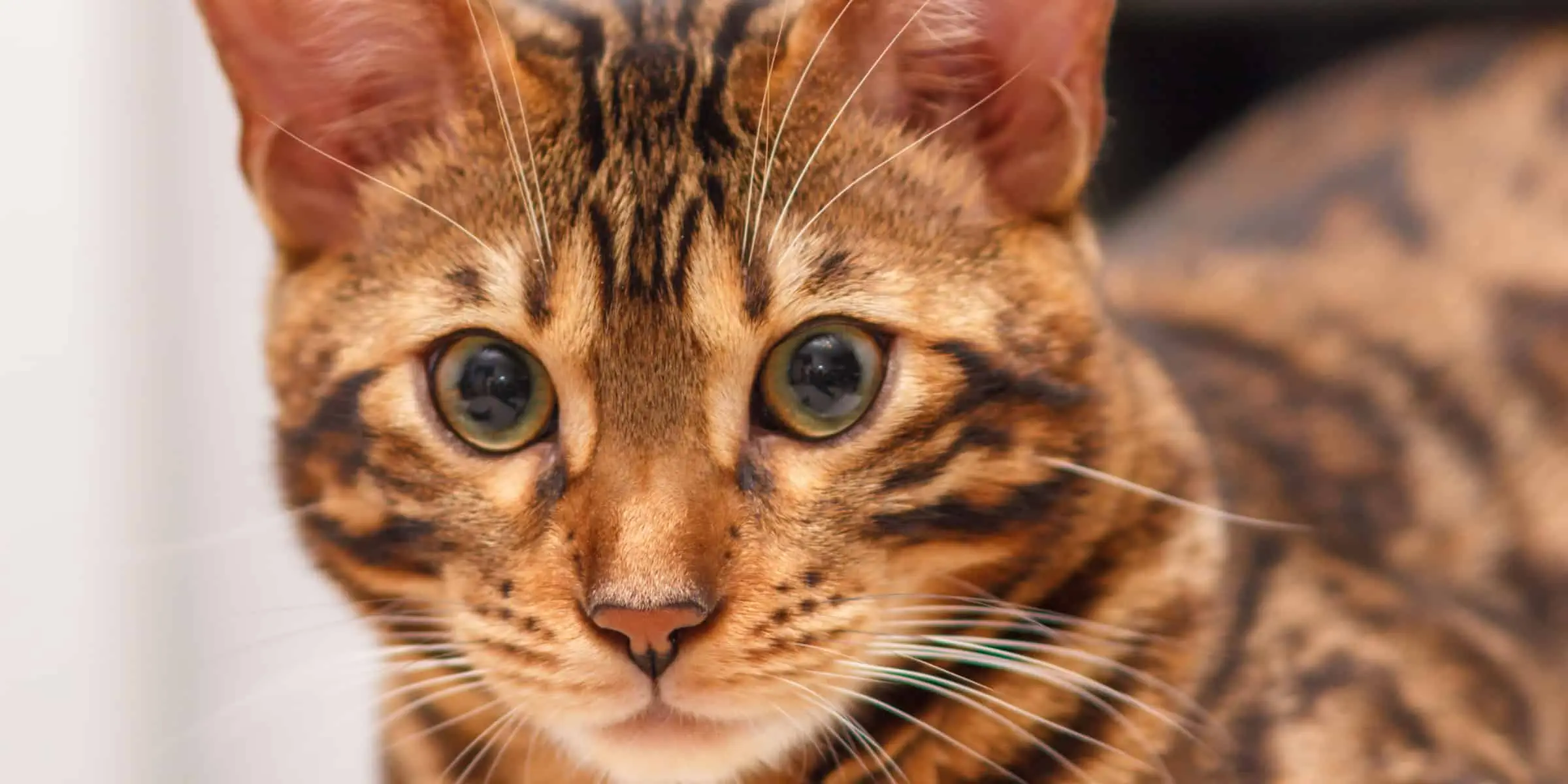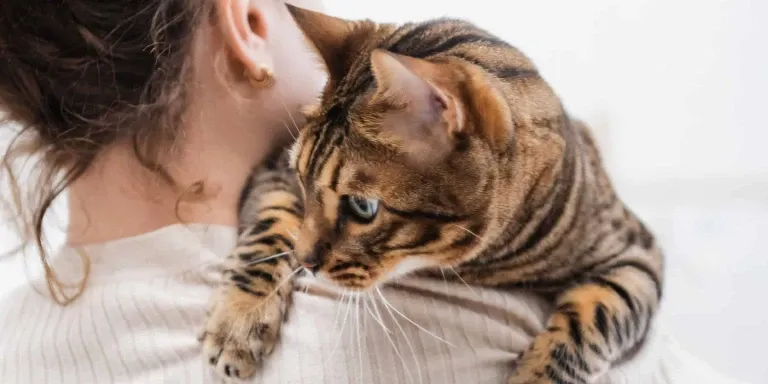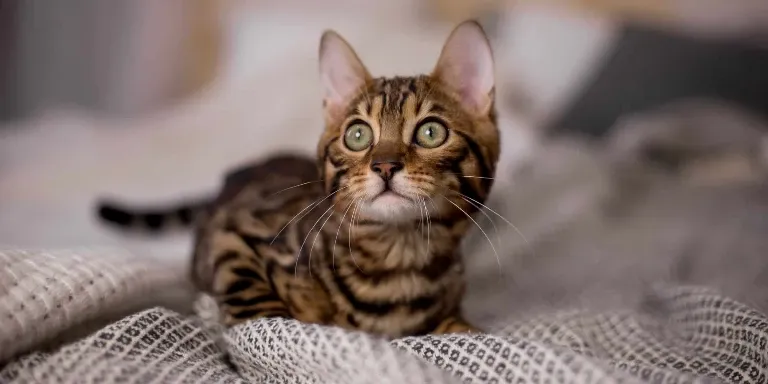The Best Fluffy Pancakes recipe you will fall in love with. Full of tips and tricks to help you make the best pancakes.

Do you have a Bengal cat that has been throwing up lately? As a cat parent, it can be concerning to see your furry friend having digestive issues. While occasional vomiting is common in cats, frequent vomiting can be a sign of an underlying health issue.
There could be many reasons why a Bengal cat is throwing up. Some possible reasons include hairballs, eating too quickly, eating something they shouldn’t have, gastrointestinal issues, or a more serious underlying medical condition.
If the vomiting persists or is accompanied by other symptoms, it’s important to take your cat to the veterinarian for a proper diagnosis. Understanding the reasons why your Bengal cat is throwing up can help you take the necessary steps to provide them with the care they need.
By examining the common causes of cat vomiting and learning how to identify the signs and symptoms of these issues, you can help keep your furry friend healthy and happy. In this article, we will explore the various reasons why your Bengal cat might be throwing up and provide tips for preventive care to help keep your cat healthy.
Understanding the Basics of Cat Vomiting
If your Bengal cat is throwing up, it’s important to understand the basics of cat vomiting so you can determine if it’s a serious issue or not.
Vomiting is a common occurrence in cats, and it can be triggered by a variety of factors. Some of the most common triggers include hairballs, eating too quickly, or simply eating something that doesn’t agree with their stomach.
In addition to these common triggers, there are also medical reasons why your cat might be throwing up. For example, cats can develop gastrointestinal issues such as inflammatory bowel disease or pancreatitis, which can cause them to vomit. Other medical issues that can lead to vomiting include kidney disease, liver disease, or even cancer.
If your cat is vomiting frequently or seems to be in distress, it’s important to take them to the vet right away. Your vet can help you determine the underlying cause of their vomiting and provide appropriate treatment. In some cases, your cat may need to be hospitalized for supportive care, such as IV fluids or anti-nausea medication.
By understanding the basics of cat vomiting and seeking prompt veterinary care, you can help ensure that your Bengal cat stays healthy and happy.
Hairballs
If you’ve noticed your Bengal cat hacking up hairballs recently, it’s important to understand the causes and symptoms.
Hairballs are formed when your cat ingests too much hair while grooming itself, which then accumulates in their stomach. This can cause discomfort and lead to vomiting.
To prevent hairballs, regular grooming and a healthy diet are essential. However, if your cat is experiencing frequent hairballs, there are also various treatments available to alleviate the issue.
Causes and Symptoms
You may notice that your Bengal cat is throwing up frequently, which could be caused by various factors such as hairballs, food intolerance, or underlying health conditions. It’s important to identify the root cause of your cat’s vomiting to ensure proper treatment and prevent further complications.
Here are some common triggers and identifying warning signs to look out for:
- Food intolerance: Your cat may be sensitive to certain ingredients in their food, leading to vomiting and diarrhea. Look for signs such as frequent vomiting after meals or a sudden change in appetite.
- Hairballs: If your cat is grooming excessively, they may be ingesting too much hair, leading to the formation of hairballs. Look for signs such as frequent vomiting, retching, or coughing.
- Gastrointestinal issues: Your cat may have an underlying health condition affecting their digestive system, such as inflammatory bowel disease or pancreatitis. Look for signs such as chronic vomiting, diarrhea, or weight loss.
- Foreign objects: Your cat may have ingested a non-food item such as a toy or piece of string, causing vomiting and gastrointestinal blockages. Look for signs such as vomiting, lethargy, or abdominal pain.
- Parasites: Your cat may have a parasitic infection such as roundworms or tapeworms, leading to vomiting and diarrhea. Look for signs such as frequent vomiting, weight loss, or a bloated abdomen.
By observing these warning signs and identifying the cause of your cat’s vomiting, you can work with your veterinarian to create a personalized treatment plan for your furry friend.
Prevention and Treatment
Preventing and treating frequent vomiting in Bengal cats can ensure their health and happiness. One of the key factors in preventing vomiting is ensuring that your cat is receiving proper nutrition.
Make sure that you’re feeding your Bengal cat a high-quality, balanced diet that’s appropriate for their age, weight, and activity level. Avoid sudden changes in their diet, as this can upset their stomach and cause vomiting. Additionally, make sure that your cat has access to clean, fresh water at all times.
Regular check-ups with your veterinarian can also help prevent vomiting in your Bengal cat. During these appointments, your vet can assess your cat’s overall health and identify any underlying medical conditions that may be causing vomiting.
They can also provide you with advice on proper nutrition and dietary supplements that can help prevent vomiting. If your veterinarian does identify an underlying medical condition, they can prescribe medication or other treatments to help manage the condition and prevent vomiting.
By working with your veterinarian and providing your Bengal cat with proper nutrition, you can help ensure that they remain healthy and happy for years to come.
Food Allergies
Your Bengal cat may be suffering from food allergies, which are common and can be caused by a variety of factors in their food, such as additives, preservatives, and fillers. These allergies can result in gastrointestinal problems, skin irritation, and respiratory issues.
If your cat is experiencing food intolerance, it’s important to make dietary changes by eliminating the allergen and replacing it with a hypoallergenic alternative. A gradual transition is recommended to avoid upsetting their stomach. Additionally, it’s important to read labels carefully and avoid any ingredients that may trigger an allergic reaction.
As a cat owner, it’s distressing to see your furry friend suffer from food allergies, but with the right diet and care, you can help your Bengal cat manage their food allergies and live a healthy, happy life. Don’t hesitate to seek veterinary advice and support if you’re struggling to manage your cat’s food intolerance.
Gastrointestinal Issues
If left untreated, gastrointestinal issues in cats can lead to more serious health problems. These issues can be caused by a variety of factors, including a sudden change in diet, infections, or even stress.
Some common symptoms of gastrointestinal issues include vomiting, diarrhea, and loss of appetite. If your Bengal cat is experiencing any of these symptoms, it’s important to take action.
One of the first steps you can take is to make dietary changes. Switching to a high-quality, easily digestible cat food can often help resolve gastrointestinal issues. It’s also important to make any dietary changes gradually, as sudden changes can actually make the problem worse. Additionally, you may want to consider feeding your cat smaller, more frequent meals throughout the day to help ease their digestive process.
If dietary changes don’t seem to be helping, it’s important to seek veterinary consultation. Your vet can perform a physical exam and run tests to determine the underlying cause of your cat’s gastrointestinal issues. They may also prescribe medication or recommend other treatments to help alleviate your cat’s symptoms.
Remember, the sooner you seek veterinary care, the better chance your cat has of making a full recovery.
Foreign Objects
If your Bengal cat’s been throwing up, it may be due to foreign objects in their digestive system. Common causes of foreign object ingestion include eating non-food items like hair ties or toys.
Symptoms of foreign object ingestion include vomiting, diarrhea, and lack of appetite. To prevent foreign object ingestion, keep small items out of reach and monitor your cat while they play.
Treatment for foreign object ingestion may include medication, surgery, or a change in diet.
Prevention and Treatment
To prevent vomiting in your feline friend, you should consider making dietary changes. Providing your cat with a diet that’s easily digestible and free from any ingredients that may trigger food intolerance can be helpful. You may want to switch to a high-quality cat food that’s formulated to meet your cat’s nutritional needs. Check the ingredients list to ensure that it doesn’t contain any allergens or fillers that could upset your cat’s stomach.
You may also want to consider feeding your cat smaller meals throughout the day instead of one or two large meals. If your cat continues to vomit despite dietary changes, it’s important to seek medical intervention. Your veterinarian can perform a physical examination and run diagnostic tests to determine the underlying cause of your cat’s vomiting.
Depending on the cause, your cat may require medication, fluids, or other treatments to help alleviate the symptoms. It’s important to address vomiting in cats promptly, as it can lead to dehydration and other complications if left untreated. By making dietary changes and seeking medical intervention if necessary, you can help keep your feline friend healthy and comfortable.
Parasites
Your Bengal cat’s vomiting may be caused by parasites, which are like unwanted guests in your cat’s digestive system, disrupting the delicate balance of their gut flora.
Here are three common parasites that can cause your cat to throw up:
- Roundworms: These are long, white worms that can grow up to several inches in length. Roundworms live in the small intestine of cats and can cause vomiting, diarrhea, and weight loss. Infected cats can pass roundworms to other cats or even to humans, especially children who may accidentally ingest contaminated soil.
- Hookworms: These are small, thin worms that attach themselves to the lining of the small intestine and feed on your cat’s blood. Hookworms can cause anemia, weight loss, and vomiting. They are transmitted when your cat ingests contaminated soil or when they come into contact with infected feces.
- Tapeworms: These are flat, segmented worms that can grow up to several feet in length. Tapeworms live in the small intestine and can cause vomiting, diarrhea, and weight loss. Infected cats can pass tapeworms to other cats or even to humans, especially if they ingest an infected flea.
If you suspect that your Bengal cat has a parasitic infection, it’s important to take them to the veterinarian immediately. Your vet can diagnose the type of parasite and prescribe the appropriate treatment, which may include deworming medication or other medications to alleviate symptoms.
Additionally, it’s important to keep your cat’s living area clean and to practice good hygiene to prevent the spread of parasites. Regular deworming and flea prevention can also help keep your cat parasite-free.
Other Health Conditions
Now that we’ve talked about how parasites can cause your Bengal cat to throw up, let’s dive into other health conditions that could be causing the issue. As a Bengal cat owner, it’s important to be aware of all the possible reasons why your cat may be vomiting.
One potential cause of vomiting in Bengal cats is dental health issues. If your cat has tartar buildup or gum disease, it can lead to discomfort and even pain, which may cause them to vomit. It’s important to take care of your cat’s teeth by regularly brushing them and taking them for dental checkups to prevent any potential dental health issues.
Another possible reason why your Bengal cat may be vomiting is due to respiratory infections. Just like humans, cats can catch colds and other respiratory illnesses, which can cause them to vomit. If you notice that your cat is sneezing or coughing in addition to vomiting, it’s important to take them to the vet to get them treated before the illness progresses.
Keeping your cat’s living environment clean and avoiding exposure to other sick animals can also help prevent respiratory infections.
Preventive Care
Taking preventive measures can help keep your furry friend healthy and happy. As a responsible pet owner, it’s important to prioritize your Bengal cat’s health. Here are some tips to help prevent your cat from throwing up:
- Proper nutrition: Feeding your cat high-quality, nutritious food is crucial to their overall health. Make sure to choose food that’s appropriate for your cat’s age and activity level. Avoid feeding your cat table scraps or treats that are high in fat or sugar. Also, make sure your cat has access to fresh, clean water at all times.
- Regular exercise: Just like humans, cats need regular exercise to stay healthy. Encourage your cat to play and be active by providing toys and scratching posts. You can also play with your cat to keep them entertained and active. Regular exercise can also help prevent obesity, which is a common health issue in cats.
- Regular check-ups: Taking your cat to the vet for regular check-ups is an important part of preventive care. Your vet can help you identify any health issues early on and provide treatment if necessary. They can also give you advice on proper nutrition and exercise for your cat.
By following these tips, you can help ensure that your furry friend stays happy and healthy for years to come. As a responsible pet owner, it’s important to prioritize your cat’s health and well-being.
Is My Siamese Cat’s Staring a Sign of Illness or Anxiety?
If your Siamese cat’s staring behavior has suddenly changed, it could be a sign of illness or anxiety. Excessive staring, dilated pupils, or avoiding eye contact may indicate discomfort. Observing other changes in behavior and consulting a vet can help determine the cause and find suitable treatment for your cat.
Conclusion
Congratulations, you’ve now gained a better understanding of why your Bengal cat may be throwing up. By identifying the common causes of cat vomiting, such as hairballs, food allergies, gastrointestinal issues, foreign objects, parasites, and other health conditions, you can take proactive steps to ensure that your feline friend stays healthy and happy.
Preventive care is key in avoiding cat vomiting. Regular grooming, feeding your cat high-quality food, providing ample water, and keeping an eye on their behavior and overall health are all essential in preventing potential vomiting episodes.
Remember, prevention is always better than cure. So, take the necessary steps to keep your Bengal cat healthy, happy, and free from the discomfort of vomiting.








